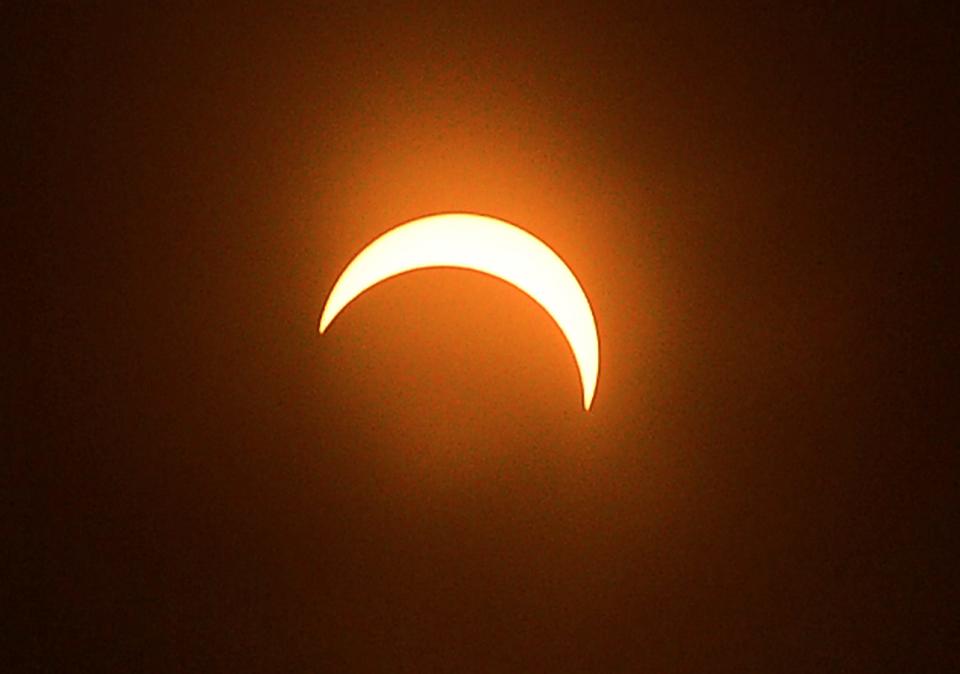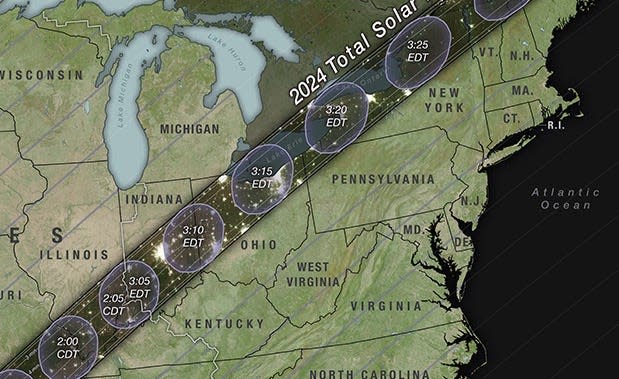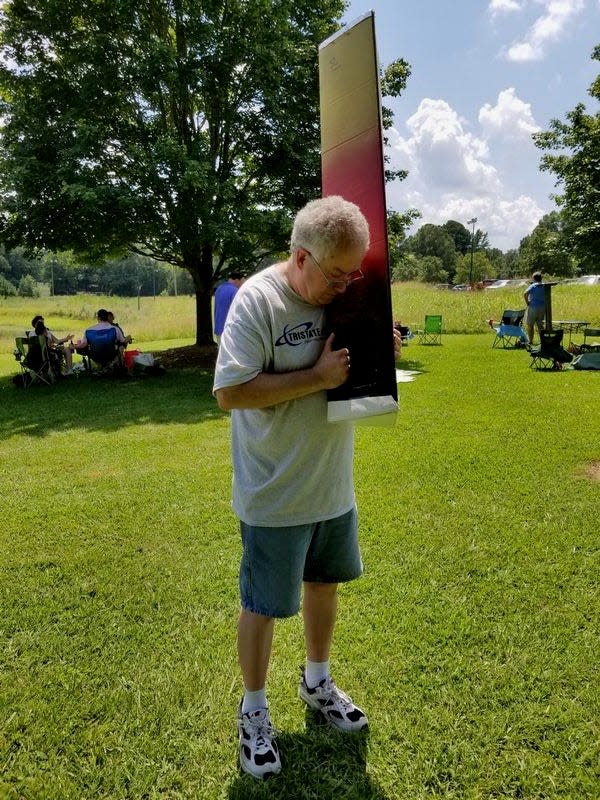Some school districts are dismissing students early for April 8 solar eclipse
Several school systems in the Tri-State area are planning to dismiss students early on April 8 due to a solar eclipse.
Among the schools dismissing students early that Monday are Washington County Public Schools; Berkeley County Schools in West Virginia; and Greencastle-Antrim and Waynesboro Area school districts in Pennsylvania.
The eclipse is expected to occur around the time students are dismissed and could be walking home or on school buses.
April 8, 2024, solar eclipse: What time is the solar eclipse? Search your ZIP code for a viewing guide
Having students walking home or riding the bus home during the height of the eclipse's visibility might prompt youths to look up at the eclipse, which could damage their eyes, Washington County Public Schools spokesperson Erin Anderson said.
WCPS officials were concerned about supervision for students in a controlled environment during the astronomical event, Anderson said. By dismissing early, students have the chance to get indoors before the event occurs if that's what they or their parents want.

The school system also has ordered over 22,000 pairs of eclipse glasses to provide to students so they can have a safe viewing experience if they choose to watch that day, Anderson said. As part of the March 28 professional development day, teachers were expected to develop lesson plans to show the students earlier in the day on April 8 how to use those glasses, she said.
The Tuscarora School District in Franklin County, Pa., will provide 1,500 pairs of glasses and viewfinders to its secondary students. Teachers are encouraged to make the eclipse a learning event before the 3:13 p.m. dismissal.
Tuscarora is not dismissing students early that day. Its elementary students are dismissed around 2:10 p.m. and will be home before the biggest part of the eclipse, according to Superintendent Rod Benedick.

The Fannett-Metal School District in Franklin County will operate on its regular schedule, according to the superintendent's office. Students will be given viewing glasses and teachers are encouraged to make the event a learning experience.
Berkeley County Schools moved its Faculty Senate Day to April 8, so students will be dismissed two hours early and won't be being bussed home during the eclipse window, according to an email from spokesperson Karla Troppman.
The school system also is providing online safety and educational resources about the eclipse and planning to share information via a newsletter and social media as well, Troppman said.
How much of the eclipse will local residents be able to see?
Hagerstown and the Tri-State area are not in the path of totality for the April 8 solar eclipse, but if weather permits area residents should be able to see close to a total eclipse.
Folks in Hagerstown could see 91.19% of the sun eclipsed that day at the event's peak, according to an email from Dan Kaminsky, TriState Astronomers' outreach coordinator.
For the Hagerstown area, the eclipse will start around 2 p.m. and finish shortly after 4:30 p.m., according to an eclipse calculator provided by USA Today.
Because it won't be a total eclipse, people "must use eye protection the entire time of the eclipse" if they are looking at the sun, Kaminsky said.
Safe eclipse viewing: Where to get free eclipse glasses: Sonic, Jeni's, Warby Parker and more giving glasses away
"Even brief moments of looking at the sun without eye protection can cause immediate and permanent vision damage," Kaminsky wrote. "You may not feel anything at the moment, because the inner parts of the eye, like the retina where light is detected, lack pain receptors."
Several members of TriState Astronomers are traveling to various parts of the path of the eclipse's totality. Even they will need to wear eye protection, he said. Only during the brief moment of "totality" when the sun is fully eclipsed, can people safely look to the sun without eye protection.
People without solar shades who want to experience the eclipse can make a simple pinhole projector, Kaminsky said.

Put a pinhole in the center of a stiff piece of dark paper or cardboard. With your back to the sun, allow the sun's light to pass through the pinhole and shine onto a flat surface such as a sidewalk, wall or sheet of plain paper held in your other hand, he described.
The image seen on that flat surface will be of the sun.
As the eclipse starts, the image will not be perfectly round because the moon will start covering the sun until 91% of the sun is blocked by the moon. As the eclipse ends, the full sun will start to appear again.
Do not look at the sun through the pinhole because, again, it could permanently damage vision, he said.
An astronomical party
The Institute, based in Waynesboro, is collaborating with the Waynesboro Area School District and NASA to host a solar eclipse viewing party from 2 to 4 p.m. in the Waynesboro Area Senior High School Stadium.
The party is free and open to the public.
A space scientist at Goddard Space Flight Center in Greenbelt, Md., along with environmental staff of The Institute, will lead the experience to help people safely view the eclipse. The scientist, Todd Toth, is a former Waynesboro Area Senior High science teacher.
Activities include making a solar viewing mask, color-changing solar bead bracelets and using a Sunspotter to make a sketch of the eclipse, according to information on The Institute's website. Participants may choose to gather solar eclipse data via the NASA GLOBE Observer App.
Free safety eclipse sunglasses will available, while supplies last. Those attending can bring lawn chairs or blankets if they want.
For more information, email The Institute at info@NatureAndCultureInstitute.org or call 717-762-0373 or visit www.natureandcultureinstitute.org.
The TriState Astronomers, who hosted an eclipse viewing party in 2017, will not be holding a viewing party for this event because of members traveling to the path of the eclipse's totality, Kaminsky said. That includes having members in New York, Ohio, Indiana, Arkansas and Texas.
This article originally appeared on The Herald-Mail: Many students get out of school early April 8 due to solar eclipse

